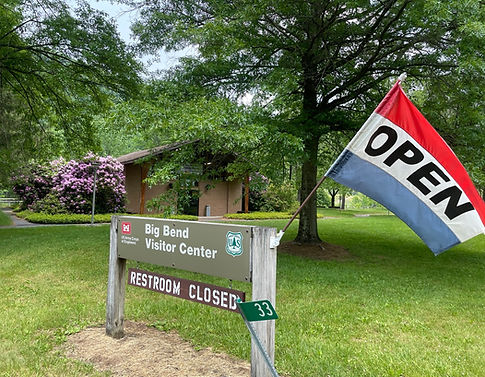Kinzua Dam
The Kinzua Dam, one of the largest dams this side of the Mississippi, was completed in 1965 by the US Army Corps of Engineers as part of the Flood Control Acts of 1936 and 1938.
Before dam construction, the Allegheny River would flood frequently, causing millions of dollars in damage per year from Warren to Pittsburgh and beyond. The name "Kinzua" is a Seneca word meaning "plenty of fish." The land that was flooded because of the construction and resulting reservoir had been inhabited by the Seneca Nation as well as non-native peoples.


Function

The Seneca Power Plant, located to the right of the dam in this photo, uses the water from the Kinzua Dam to generate electricity. Water is pumped from the Allegheny Reservoir up to the Upper Reservoir and stored. When the water is released back down, the result is hydroelectricity.
The Kinzua Dam serves many practical functions in addition to flood control as mentioned above. The resulting reservoir created by the dam can provide water during dry spells, and the flow regulation carefully controls the water depth making it more navigable for commercial and recreational use. The mammoth Kinzua Dam also provides hydroelectric power at 400,000 kilowatts per hour at peak. Normal outflow is around 2,000 cubic feet per second, which is about the size of 2,000 basketballs per second! Water that flows through the dam continues to Pittsburgh where it joins the Monongahela to form the Ohio River. It then goes to the Mississippi River all the way to the Gulf of Mexico.



When enough water is released, which happens frequently in the fall, the reservoir's receding water level can often reveal pieces of history that pre-date the dam. This photo shows an old roadway that is usually under the waters of the reservoir.
The high water mark is from Hurricane Agnes in 1972. Such flood control is crucial for Warren and other communities along the Allegheny River, perhaps most notably Pittsburgh.
The Upper Reservoir, located on top of a neighboring mountain, can hold 2 billion gallons and is used for hydroelectric power generation.
Allegheny Reservoir
The Allegheny Reservoir, created by the Kinzua Dam, spans 12,000 acres and is a mecca for sightseers, fishermen, birdwatchers, boaters, and hikers. This lake-like experience is unique to the Allegheny National Forest. Rent a boat or bring your own. There is always an adventure here!




Allegheny Reservoir



Morrison Bridge
Water fun!
Kinzua Dam Visitor Center
Opened seasonally just south of the Kinzua Dam, the Kinzua Dam Visitor Center is an educational and fascinating experience, showing the history and science behind the engineering wonder. The US Corps of Engineers manages the visitor center and typically posts open hours on their Facebook page.






History
The area around the Kinzua Dam was very different before the dam was constructed. Looking at the large lake-like reservoir, one would never know that there once were thriving little towns in the valley along the Allegheny River, such as Kinzua and Corydon. These communities were uprooted and the towns flooded by the reservoir. Even more controversial was the uprooting of the Seneca Nation of Indians from their land, which broke the Pickering Treaty signed by Chief Cornplanter and then President George Washington, guaranteeing the land to the Seneca in perpetuity. For more information, please visit the Warren County Historical Society and the Seneca Iroquois National Museum.
.jpg)
The once bustling town of Kinzua is seen in this late 1800's image. The Kinzua School is on the lower right, and the town lies along the valley as the Allegheny River snakes through the community.
Photo courtesy of the Warren County Historical Society.

The same view today shows no evidence of what was.
Photo taken at what is now known as Kinzua Point.



